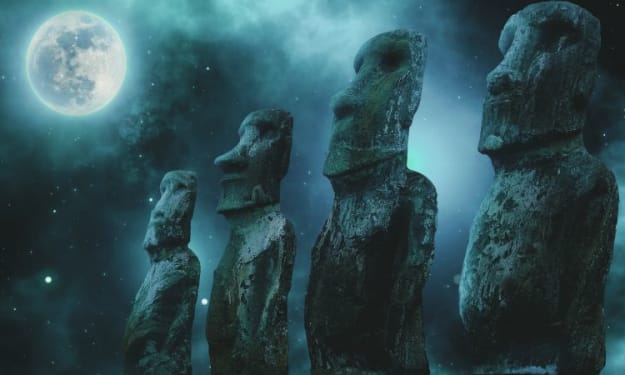The Origins of Gods
Teotihuacan, an Ancient City

Many people agree that there has always been a gap between humans and God or gods, and between Earth and heaven. People have always wanted to connect with the divine, but it's been challenging.
Some say this search is endless and doesn't bring much gain, while others believe a deep connection exists within humans and the Earth. That might be true.
Teotihuacan means "City of Gods" or "where men become gods." This lost city is near the Valley of Mexico, about 25 miles from modern Mexico City. It could provide clues about human origins and the divine.
Teotihuacan was founded around 100 B.C. and was likely one of the world's biggest cities at its peak, with over 150,000 inhabitants and massive buildings. It showed advanced knowledge in math, geology, astronomy, and engineering.
To put it in perspective, Teotihuacan was built more than a thousand years before the Aztecs arrived in Mexico. The Aztecs probably named it, recognizing its grandeur. It covered 8 square miles and supported a population of over a hundred thousand.
There was a central road called the "Street of the Dead," connecting the Temple of the Sun and the Temple of the Moon. These temples and structures resembled the pyramids in Egypt.
Teotihuacan's design included specific pairings of structures aligned to a north-south axis. The Temple of the Sun had the same base as the Great Pyramid of Khufu at Giza.
Interestingly, all these temples and the Pyramid of Giza matched the layout of Orion's belt. Along the "Street of the Dead," the pyramids aligned with the orbits of planets in our solar system. The Pyramid of the Sun sat at the center, similar to the Sun in our solar system, and was 75 meters tall with a 225-meter base, making it the second-largest pyramid known.
Most believe only priests could climb the pyramid steps for rituals. It's unclear who built Teotihuacan; some think it was the Toltecs or the Totonac culture. Evidence suggests multiple cultures influenced its layout, including the Mayan, Mixtec, and Zapotec, with Mayan and Zapotec texts found in its temples.
Regardless of its builders, Teotihuacan's craftsmanship was exceptional for its time.
One important excavation focused on the Pyramid of the Moon, revealing evidence of animal and human sacrifices, possibly as offerings to gods or blessings during construction.
Another remarkable find at Teotihuacan is Mica, a mineral usually found in Brazil, present in most building structures. This suggests possible connections to ancient Indian, Egyptian, Greek, Roman, Chinese, and Aztec civilizations.
Mica's stability in various conditions, electrical properties, and insulating abilities are remarkable for an ancient world.
The question of our origin will always intrigue us. Discoveries like Teotihuacan remind us of our shared human connection despite cultural differences.
Teotihuacan's existence continues to be a testament to human ingenuity and the quest for understanding the divine. Its awe-inspiring architecture and alignment with celestial bodies provoke questions about the spiritual and scientific knowledge of its creators. The presence of animal and human sacrifices suggests a complex religious belief system, offering a glimpse into the spiritual world of its time.
Moreover, the widespread use of Mica in construction materials hints at possible cultural exchanges or shared knowledge among distant civilizations. The enduring mystery of Teotihuacan's origins fuels ongoing research, with scholars seeking to uncover the identities of the city's builders and the reasons behind its abandonment.
In an ever-evolving world, Teotihuacan stands as a testament to human curiosity and the enduring desire to bridge the gap between the mortal realm and the divine. This ancient city serves as a symbol of our shared human heritage, transcending borders and uniting us in our eternal quest for meaning and connection with the cosmos.






Comments
There are no comments for this story
Be the first to respond and start the conversation.